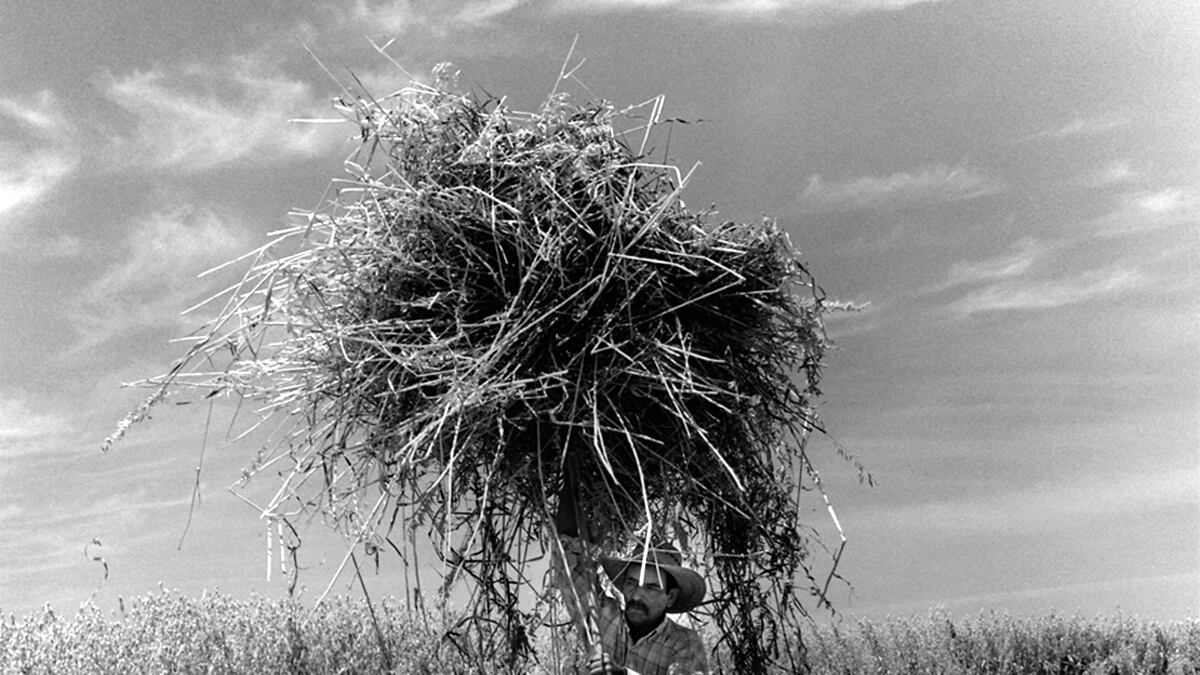Spend even a little time with Valley of Shadows and Dreams, and you come away thinking that John Steinbeck and Dorothea Lange had it easy. Back in the Depression, all they had to do—in The Grapes of Wrath and Lange’s documentary photographs—was chronicle the plight of dispossessed white Southerners who migrated to California looking for work in the Dust Bowl ’20s and ’30s. Since then, the problems in California’s Central Valley have not gotten a lot better, but they have multiplied and grown much more complicated: migrant workers’ issues, environmental degradation, drought, and rampant, often ill-considered residential development. Ken and Melanie Light have their hands full documenting all this, but Valley of Shadows and Dreams more than meets that challenge.
Some of the photographs were part of a multimedia project published by Newsweek.com in 2009 that was nominated for a digital ASME award and won a Society of Professional Journalists Award. The Lights have expanded on the photographs and added a splendid written commentary. The results are beautiful, intriguing, worrisome, and heartbreaking. Individually, Ken Light’s photographs are exquisite. Collectively, they are chaotic, often nonsensical, and disturbing. This is not the fault of the photographer, but rather an accurate rendition of his subject's contradictory nature.
The scale from picture to picture veers from the small and personal—a mother and child, a migrant worker beset by lung disease using his inhaler—to the vast and almost malignantly gigantic—farm fields that spread to the horizon. There is no middle ground here. Seen from the air, the landscape looks like a Mondrian grid, but its logic is purely abstract. If someone didn’t tell you that you were looking at cotton fields, you’d have no idea you were seeing a farm.
The Central Valley runs from just south of Sacramento almost to Los Angeles and encompasses territory roughly the size of Tennessee. For most of a century, it has been the home of agriculture on a massive scale. If the word agribusiness wasn’t coined to describe what goes on there, it should have been. The Valley’s 81,500 farms, many of them now under absentee ownership, are typically several-thousand-acre operations, and they take in $36 billion annually, making California “the No. 1 state for farm revenue and representing 11.2 percent of total U.S. farm revenue.”
Farming on this scale requires two things in short supply in the region: a lot of people and a lot of water. Migrant labor (average annual income for a migrant worker in the Valley: $15,000) fills one of those needs, and water brought in from elsewhere solves the second problem, although both solutions seem to create as many problems as they solve.

Highly mechanized farming has for decades depended on fossil fuel and chemicals. In recent years that toxic combo has been abetted but not replaced by more and more technology. Imagine a land where fields have been “leveled by lasers to conform better to the GPS-guided machines that troll them,” as Melanie Light writes. In recent years, developers have begun converting thousands of acres to residential development. Between 2000 and 2006, more than a quarter of the Central Valley’s farmland was converted to “urban use,” according to the Lights. The results look like housing developments on the moon. The economic downturn stalled a lot of the building, leaving half-finished houses, lots with curbs and driveways but no construction, and a general sense of derelict despair. It is hard to say which is worse, the half-finished McMansions or the ones that were finished, since any sort of residential development in this region will sorely tax the meager natural resources necessary to support homes and neighborhoods.

If you are comfortable with the euphemism “guest workers,” you should probably have a look at Ken Light’s photographs. The individuals and families in his pictures enjoy nothing that could be termed hospitality. On the contrary, they look overworked, often unhappy, and old before their time—and there are a lot of them. “In 2009, about 1.6 million migrant, mostly undocumented and seasonal farm workers planted, grew, and picked crops valued at $34.8 billion,” Melanie Light writes. Their existence seems precarious at best, and mostly marginal—farm work has been designated by the federal government as the third most dangerous occupation in the country. But while they often look beaten down, they don’t look defeated. We see them at home, in school, at funerals (including the military kind), celebrating Halloween and Christmas, going to dances, and getting by as best they can. The text and photographs always accord these people something they are rarely allowed by the giant companies for which they work—their dignity.





